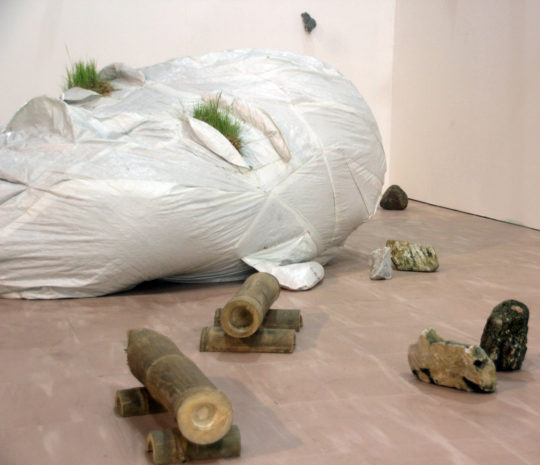
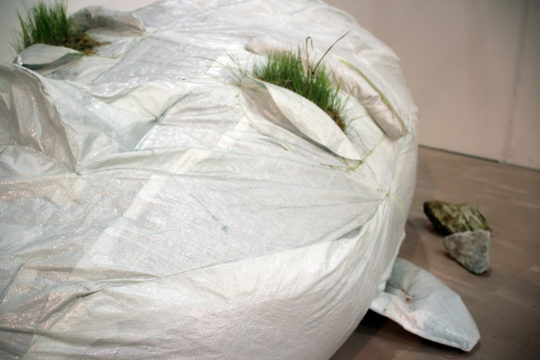
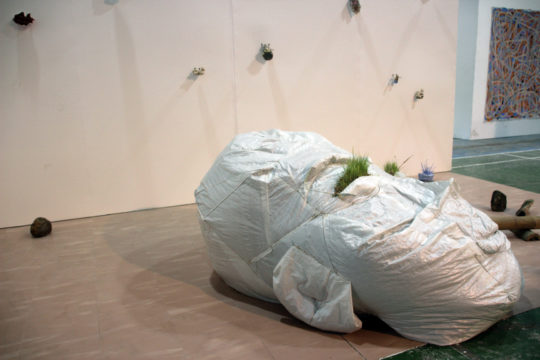
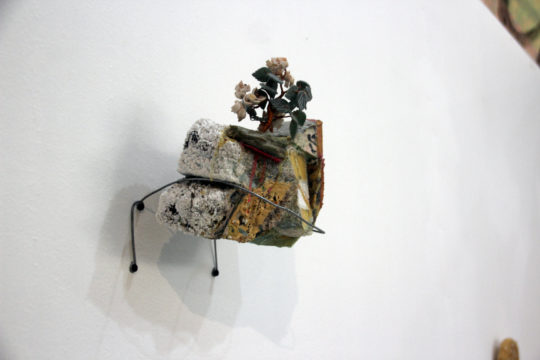
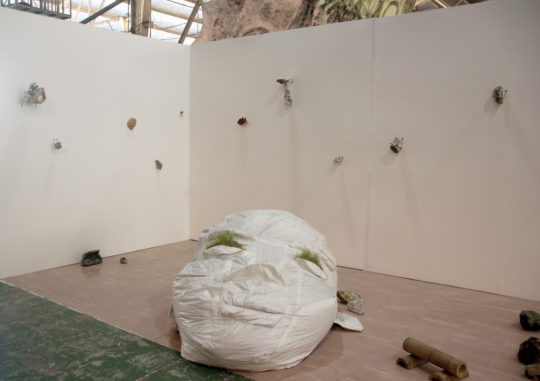
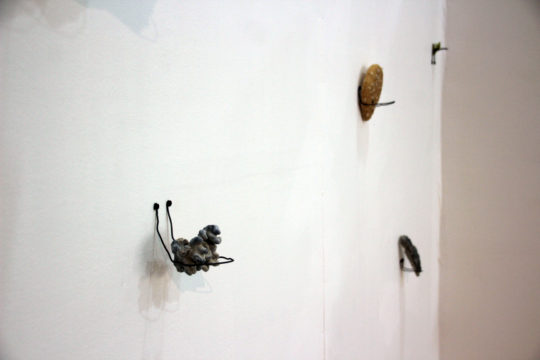
KINAHANG-EAN BUNYAN (NEEDS WATERING)
2018
8 X 16 X 8′
large cranium – woven plastic sack stuffed with rice husks and rice plants on vinyl ground. Small sculptures – polystyrene, carpet underlay, tempered glass, latex, borax crystals, found shells, wood shavings, plaster, cement, sprayfoam, colored inks, volcanic sand, rubberbands, petrified wood, casubha spice, plastic mesh, rubber cement, found ceramic & copper figurine
Sculptural installation for the 2018 Viva Excon – the Visayas Islands Visual Arts Exhibition and Conference.
– – – – –
In Greece off the island of Mykonos, a couple of hours across the water is a small uninhabited island of Delos. According to myth, the twin gods Apollo and Artemis were born there, giving its other name, Island of the Gods, much gravitas. Aside from the many artifacts discovered in Delos, is the most extensive collection of domestic sculptures from the Hellenistic period. These works adorned peoples’ entryways and gardens, announcing to quite an effect, their owners’ wealth and prestige.
There were sculptures of Deities and Kings. Among them were apparent replicas of more famous artworks of the day. Were these artworks commissioned to hint at affiliations with royalty and gods, elevating the family line? What was most curious – among the Apollos and the Aphrodite’s and Dionysus’, were sculptures made in the image of the homeowners themselves.
Archeological evidence has lead researchers to conclude Delos enjoyed and benefited from a vibrant marketplace, run by merchants from many corners of the world selling exotic goods and materials.
Have the heavens lowered in the eyes of these ancient people? Alternatively, has worldly abundance lead the people to believe their status raised in the level closer to the Kings and Deities that adorned their homes?
What is clear is that the people of Delos were rewriting their personal story through art.
Similarly, Kinahang-ean bunyagan is about reshaping history, as freely as water shapes the land. Kinahang-ean bunyagan strives to be monolithic in gesture but humble in its execution. Though inspired by the remnants of the sculptural self-portraits seen in Delos, Kinahang-ean bunyagan is not in the image of any one person, but an imagined figure, a stand-in for the person who cannot be put together through archeological findings and historical research. Their legacy lives on through the earth, and it’s products, through what’s left of the stories passed on to succeeding generations.